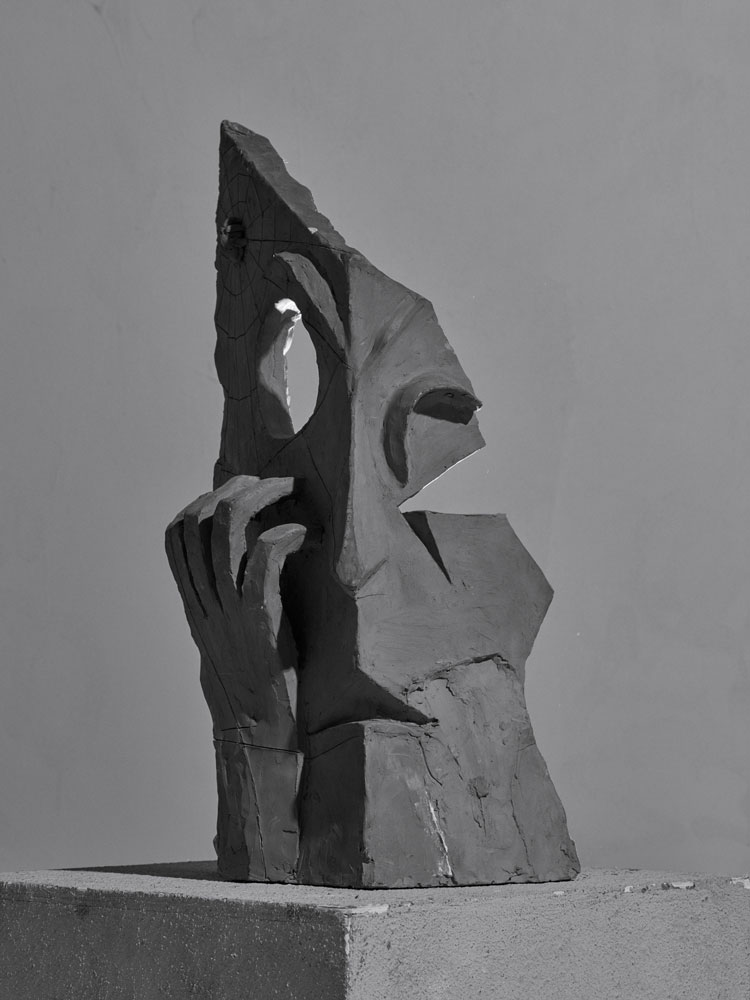
“This sculpture from the 1950s is called Jealousy, though it doesn’t strike me as envy as much as it does absolute doom. It reminds me of myself in a way. I found it on Portobello Road, where I never usually seek things out, but the colour of the clay and its severe angles caught my attention the moment I saw it.”
“When I’m looking for objects, I don’t use any great science. I just trust my instinct and allow things to catch my eye. There isn’t some amazing story behind the discovery of most pieces; I think this dog statue was from a charity shop, for example. Dachshunds are such funny dogs. Their silhouette is so distinct and just comical. It wouldn’t necessarily look good on its own, but in among other things it comes alive, and I always try to keep that fact in mind when seeking out new stock.”
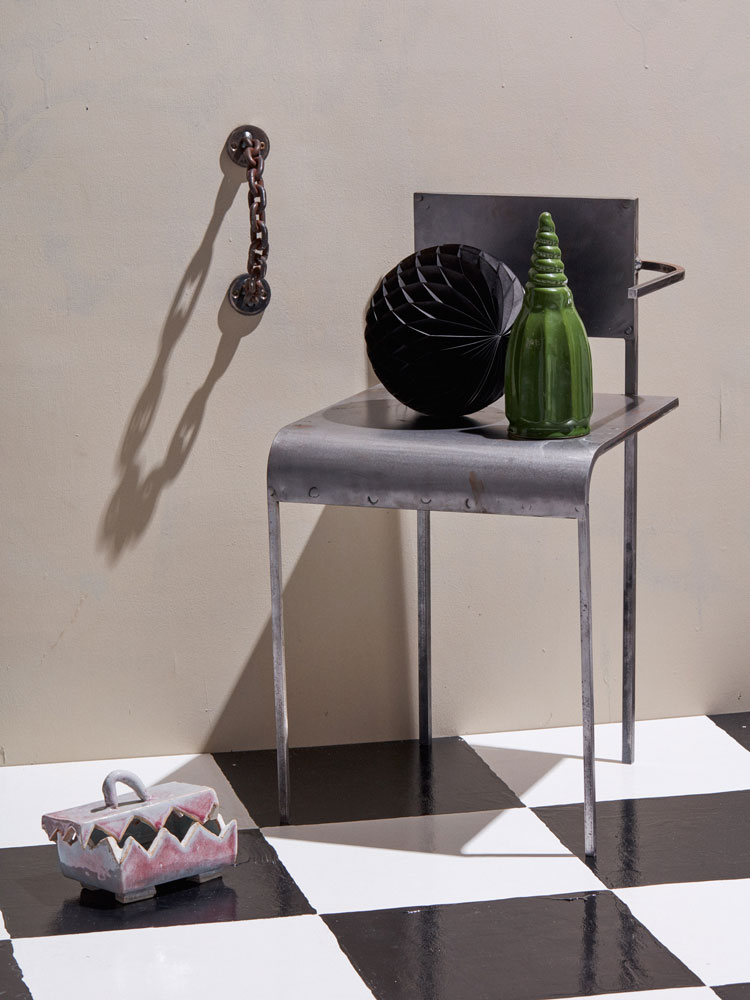
At first glance you almost think that this chair by Ksenia Pedan is meant for a child, because of the lightness and delicacy of its design, but it’s for an adult.
“Ben Burgis made the chain handles as part of a series. They’re massive, and proportionally completely wrong, which I love about them. The wrought iron in particular is kind of sleazy and not very pretty. That suits me, though.
“I love the glossiness of this off-green piece, like freshly washed-up seaweed. Whenever I’m shopping for secondhand pieces, I imagine the story behind how all the objects got there, when aesthetics changed and they were disposed of or sold. I couldn’t give a shiny shite about what the trends are, myself.
“I suspect that the glazed-lidded box is actually a butter dish, though it would be really hard to clean if you used it for that. I love anything with a zigzag line. It makes it look as if it has a little mouth; the obtuseness of it as a graphic shape is almost gross.
“I’m drawn to objects that aren’t necessarily just beautiful, but have a harshness to them. To a lot of people, the pieces I select might not be pleasurable to see, but that’s what I find special about them.”
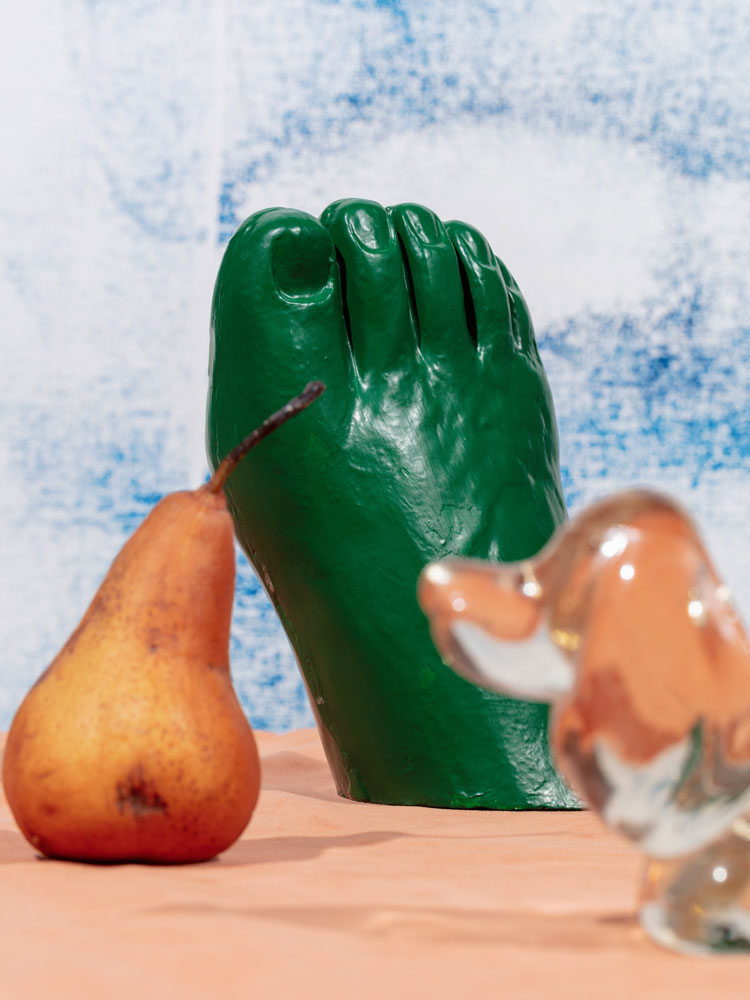
“The partner foot of this bookend is made of bronze, whereas this one is made from dyed Jesmonite, a sort of rubbery stone with an oddly fleshy feel. Both were created by my friend the artist Miranda Keyes for my show Smoke and Mirrors last year, I was immediately taken by their off dimensions. Though they’re not moulded from life, Miranda is always getting asked if they are her actual feet, which is hilarious because they are pretty troll-like.
“When I’m looking for objects, I don’t use any great science. I just trust my instinct and allow things to catch my eye. There isn’t some amazing story behind the discovery of most pieces; I think this dog statue was from a charity shop, for example. Dachshunds are such funny dogs. Their silhouette is so distinct and just comical. It wouldn’t necessarily look good on its own, but in among other things it comes alive, and I always try to keep that fact in mind when seeking out new stock.”

“This basket is probably German Arts & Crafts. Or maybe it was made 10 years ago. Or maybe it was put together yesterday. Pieces with such an elusive quality are always my favourites; the ones that you can’t date are the dream pieces to come across. Sometimes I like to imagine the kind of person who made it. It’s very much a homespun piece. There is a fragility to it but it’s actually very robust. “Three-legged bobbin chairs like this are very classic of English brown furniture, but because of the undulating turned wood of its legs it has a modernity and a timelessness.”
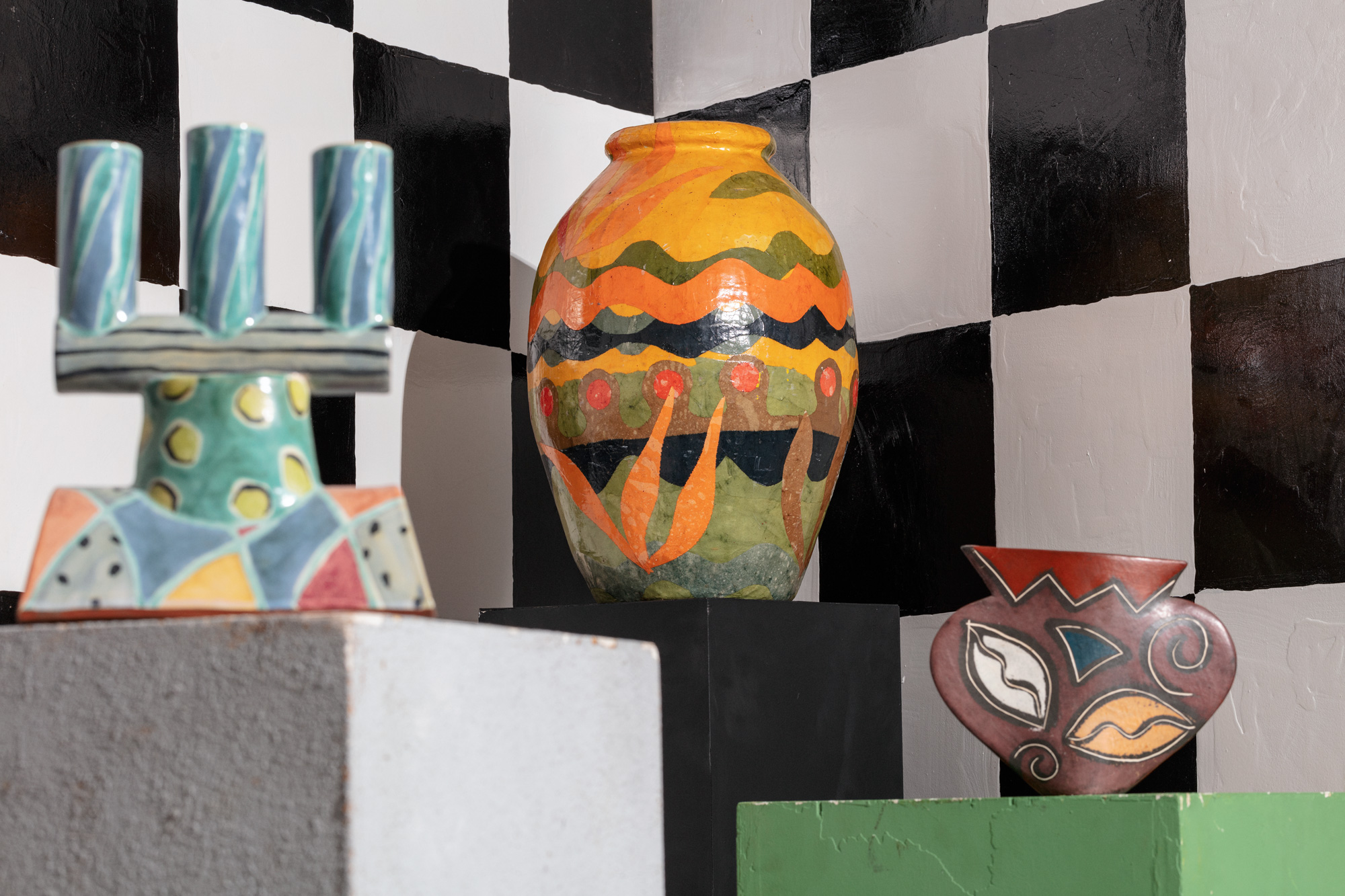
“I remember my mum had a pot similar to these when I was a child. It was blue with clouds on it, and I’m still drawn to similar shapes and colours to this day. This trio exemplifies postmodern design, but it’s funny what people pick out nowadays from the 1980s; although I love the Memphis Group, there were so many other interesting things going on then. I’m trying to find out more about the central vase, but it’s a bit of a mystery to me! It is of extraordinary quality and by someone who really knows what they’re doing with papier-mâché. In the 1970s and 1980s it was really popular as an artform, but as a medium it actually goes back for centuries: the Victorians were making tables out of it.”
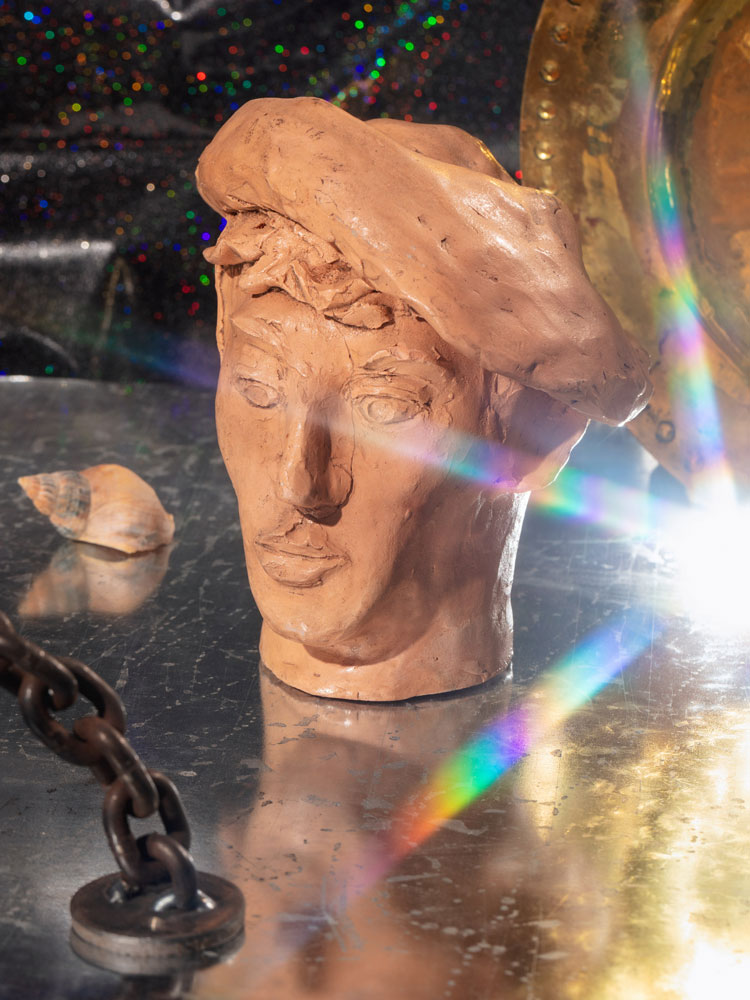
“This self-portrait by the English clown Hal Brooks from Worthing was bought from a seller in Sussex, and not too far from Brook’s place of birth. There’s always something to be learnt from the dealers, and a story behind each piece. Brooks is very handsome for a clown, he looks as if he could be in a Gaultier advert.
“The plate in the background has my initial J on it, surrounded by gadrooning. I bought it for a project I was doing at a National Trust house where I wanted to put my initial everywhere, to mark my territory for the photos rather than pissing on it all. It was absolutely miraculous to clean up with Brasso. It was completely black when I bought it.”
Photo assistant: Nathan Perkins

